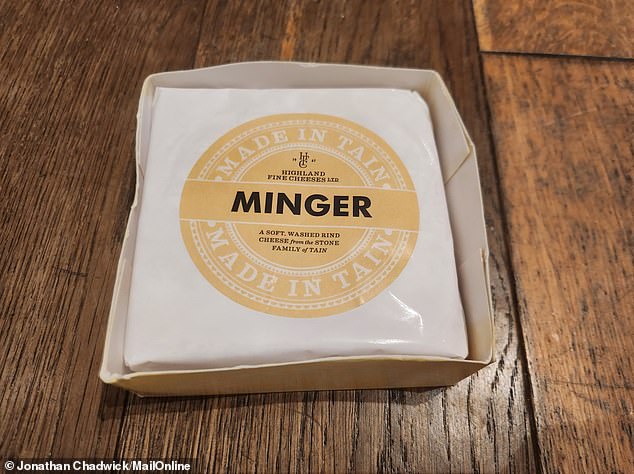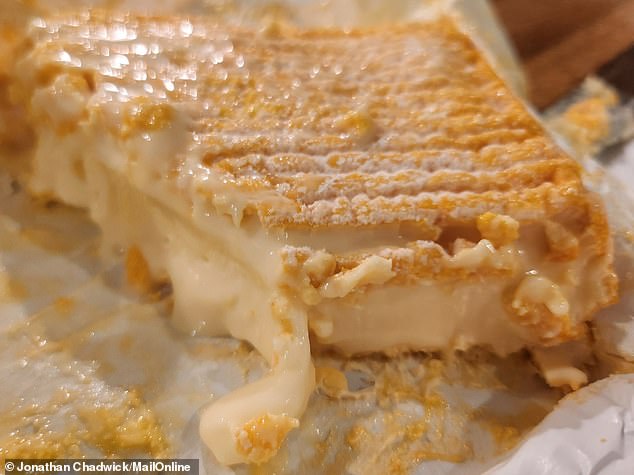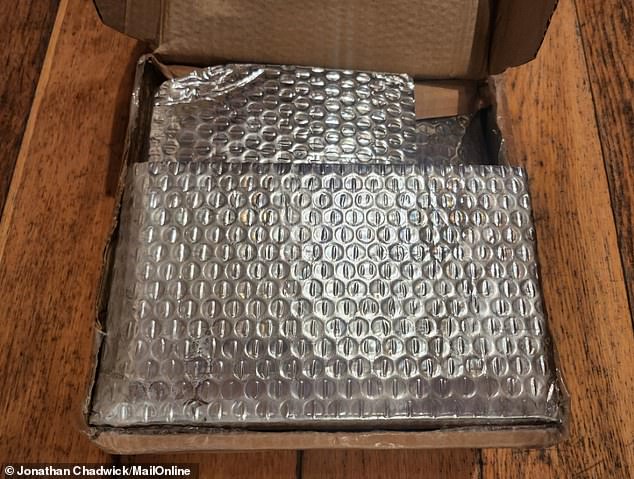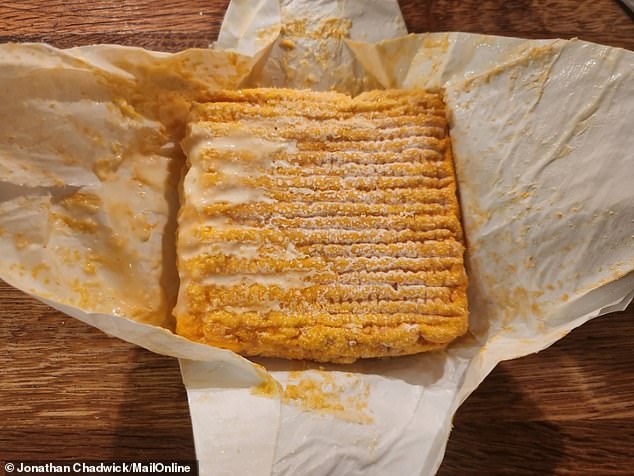I Tasted the 'Smelliest Cheese in the World' Called The Minger – and It's Delicious (Despite Being Covered in the Same Bacteria That Give Us Smelly Feet)
It has been called the 'world's smelliest cheese' and produces a terrifying pong that 'dominates the room'.
Now MailOnline has got its hands on 'The Minger', the new product from Scotland that even cheese makers are afraid to try.
The Minger is a British soft cheese, similar to a camembert, but with a moist interior that is 'pure pleasure in the mouth', say its makers.
It is a type of washed-rind cheese, which means that it has been regularly moistened in a salt solution for two months during ripening.
This process encourages the growth of Brevibacterium linens – the microbe responsible for smelly feet with an aroma known to attract insects.

The Minger – dubbed 'the smelliest cheese in the world' on social media – is a type of 'washed rind' cheese, meaning it has been regularly moistened in a salty solution during ripening


With a vibrant orange skin and sticky pale innards, The Minger is certainly a thing of beauty – but what does the beast smell like?
The Minger is the creation of Highland Fine Cheeses, based at Blarliath Farm near the town of Tain in the Highlands of Scotland.
The company has teamed up with Myconeos, a spin-out from the University of Nottingham, to produce new types of fungi for its products.
Rory Stone, head cheesemaker at Highland Fine Cheeses, said The Minger is particularly “hellish in taste” but admitted he's not entirely sure why.
Moreover, it is not the first washed-rind cheese to contain the pungent microbe Brevibacterium linens.
“It seems like we're good at making things moldy,” Stone told MailOnline.
'The humid environment – and Scotland is extremely humid at the moment – helps promote the yeasts and penicilliums we use.'
Before tasting, I asked Mr. Stone how long The Minger had to sit out of the refrigerator before it could be consumed, and he replied, “Your cry, I never eat it.”
This made me a little concerned: how powerful does a cheese have to be that even its maker won't touch the stuff?
When it arrived, it was packaged in a sturdy silver packaging that reminded me of the shiny material NASA uses to insulate its space telescopes.
It's clear that traders are taking no chances when it comes to supplying The Minger – increasingly dubbed 'the world's most fragrant cheese' on social media.


When The Minger arrived, it was packaged in sturdy silver packaging that reminded me of the shiny material NASA uses to insulate its space telescopes.


The Minger's skin is particularly orange due to the addition of a special ingredient to the brine solution
Immediately after unwrapping the wax paper, I'm struck by the crust, which looks incredible, with gnarly bumps and a bright orange color.
According to Mr Stone, this is due to the addition of annatto – a natural orange dye derived from the seeds of the achiote tree – to the brine solution.
I sniff it cautiously at first and hear faint traces of salt air and barnyard noise, but otherwise it's not nearly as strong as I expected.
My knife pierces The Minger's vibrant crust with ease, and the beautifully gooey innards spread well on a cracker.
I eat the whole thing in one bite, expecting the worst, but it's absolutely delicious: salty and milky with a hint of umami.
I'm really surprised because from what I heard about The Minger, I was afraid I was going to have to spit it back out and run away in panic.
This doesn't come close to the smelly British cheeses I've tasted in the past and that my dad gifts me every Christmas, like Tunworth from Hampshire, the 'English camembert good enough to make a Frenchman cry' .


My knife pierces The Minger's vibrant crust with ease and the beautiful gooey innards spread well on a cracker
But nothing takes the cake from Gloucestershire's famous Stinking Bishop, which makes The Minger taste like strawberries and cream.
Nearly twenty years ago, demand for Stinking Bishop soared after Gromit used it to revive Wallace from the brink of death in their film “The Curse of the Were-Rabbit.”
While I somehow don't think it would have the same effect even in the fictional universe, the cheese-loving duo would definitely crack for The Minger.
It's not the smelliest cheese in the world – not by a long shot – but thank goodness it's tasty.
The Minger is available from Scottish Asda stores for £3 for a 125g triangle, although the supermarket is reportedly interested in stocking it further south.
